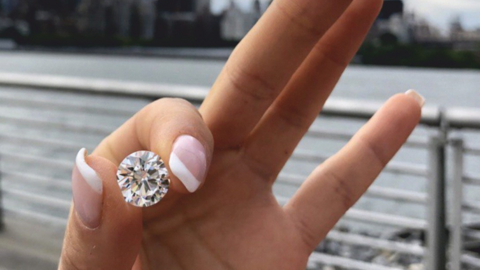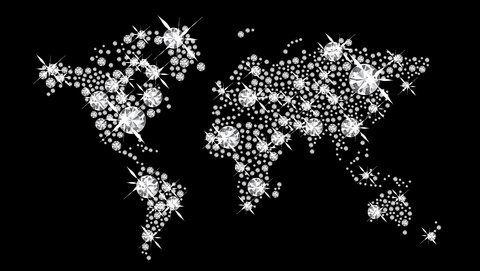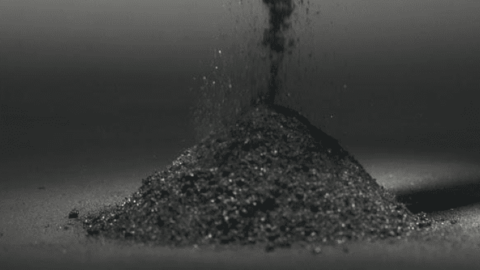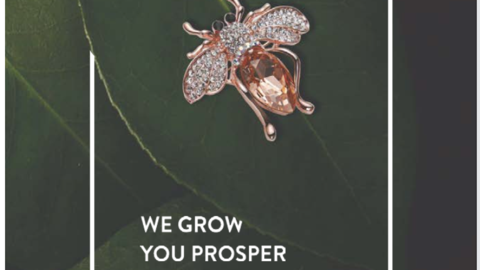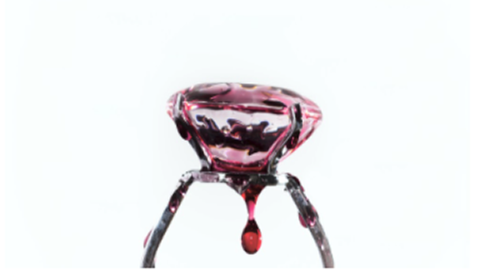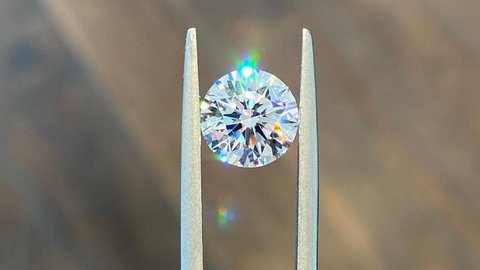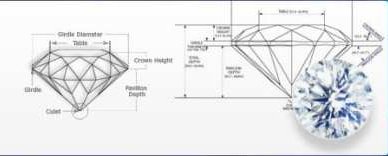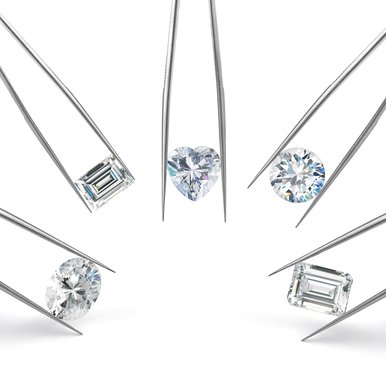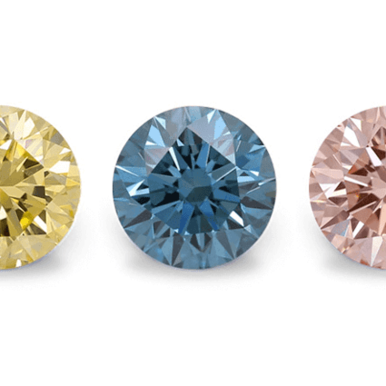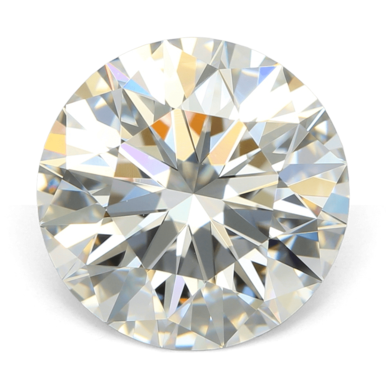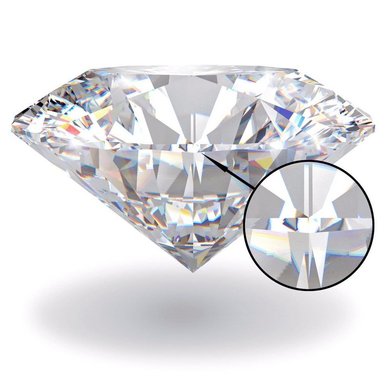Oval Lab-Grown Diamond Rings: Timeless Elegance Meets Value
Author: Alex K., CMO at Labrilliante Updated: 2025-11-14 Reading Time: 12 minutes
Oval lab-grown diamonds deliver 10% more surface area than rounds of equal carat weight while costing 60-80% less than natural equivalents. Length-to-width ratios between 1.35-1.45 create finger-lengthening elegance that's driven 23% search volume growth year-over-year. IGI-certified 2-carat ovals now cost $1,800-2,400 versus $12,000-16,000 for mined diamonds—making A-list aesthetics accessible to everyone.
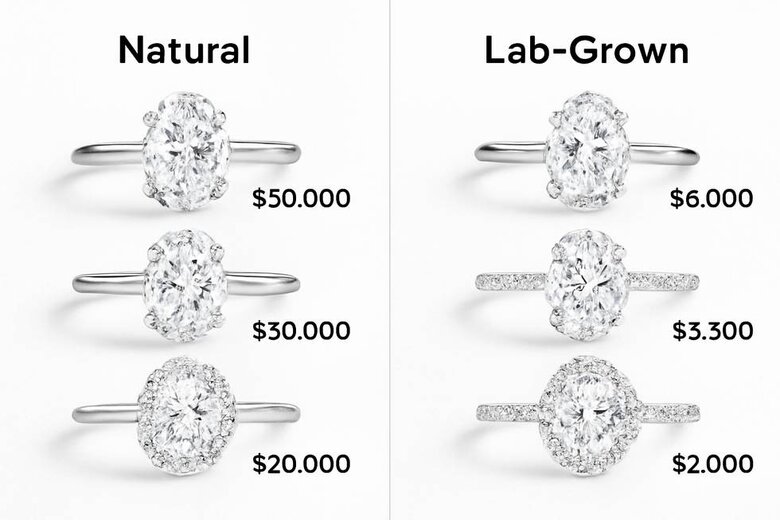
Engagement rings have always symbolized more than commitment—they're cultural artifacts broadcasting values, aspirations, and identity. When Blake Lively, Hailey Bieber, and the Kardashian clan chose elongated ovals, they didn't just start a trend. They validated a shape that maximizes visual drama while lab-grown technology has demolished price barriers. This comprehensive guide reveals why oval lab-grown diamond rings now define modern romance, combining celebrity-level elegance with strategic value. You'll discover the geometry behind their finger-slimming appeal, exact savings calculations across carat weights, and how to select length-to-width ratios that match your aesthetic—without the confusion plaguing traditional diamond shopping.
The Traditional Argument: Why Natural Diamond Advocates Still Question Lab-Grown Value
Critics of lab-grown diamonds raise legitimate concerns about resale value and long-term market stability. Natural diamond advocates correctly point out that lab-grown stones currently retain only 10-15% of purchase price in secondary markets compared to 25-35% for mined equivalents. If you view your engagement ring as a financial asset or family heirloom with transferable monetary value, this depreciation gap matters. Additionally, as laboratory production scales and technology improves, lab-grown prices may continue declining—potentially leaving early adopters with stones worth even less than current resale values suggest.
Here's where that argument holds weight: for buyers prioritizing liquidity or planning to upgrade within 3-5 years, natural diamonds do offer marginally better resale recovery. Families with generational wealth transfer traditions may value the historical scarcity narrative that natural stones provide. These scenarios exist.
But here's the reality check: both categories lose significant value the moment you leave the store. A $15,000 natural diamond sells secondhand for $3,750-5,250. A $2,400 lab-grown equivalent sells for $240-360. You've lost $9,750-11,250 versus $2,040-2,160. The natural diamond's "better" percentage doesn't offset its catastrophic absolute dollar loss. Unless you're purchasing investment-grade stones over 5 carats with exceptional provenance—which 99% of engagement ring buyers aren't—diamonds function as emotional purchases, not financial instruments. Lab-grown technology simply makes that honest reality affordable, allowing couples to invest savings in experiences, homes, or actual appreciating assets rather than locked capital in depreciating gemstones.

Get the A-List Look: Blake Lively's Oval Sparkle for 70% Less
Blake Lively's 12-carat oval engagement ring represents aspirational romance—and lab-grown diamonds now deliver that same look for 60-80% less than mined equivalents. Her elongated stone creates finger-slimming elegance while maximizing coverage. This explains why ovals now dominate celebrity engagement rings.
The math behind the appeal? Simple. A 2-carat oval provides roughly 10% more surface area than a round diamond of equal weight. Gemologists call this "perceived size advantage." When Hailey Bieber chose her 6-carat oval or Kourtney Kardashian selected her elongated stone, both capitalized on this optical phenomenon—the shape appears larger than carat weight suggests.
Lab-grown alternatives replicate these celebrity rings with identical chemical composition: pure crystalline carbon arranged in cubic crystal lattice. Same refractive index (2.417). Same dispersion (0.044). Same hardness (10 on Mohs scale). The only difference? Six weeks in a laboratory instead of billions of years underground.
The technical beauty of ovals: 56 precisely angled facets interact with light identically to rounds but distributed across an elongated pavilion. This geometry creates Blake Lively's sophisticated aesthetic—maximum brilliance with natural finger-lengthening lines. The trade-off? A "bow-tie effect" where facet angles can concentrate shadows across the stone's center. Skilled cutting minimizes this. But it remains absent in rounds—a reality of oval symmetry, not a defect.
Sound complex? Here's what matters: length-to-width ratios between 1.30-1.50 generate highest satisfaction. Too narrow (under 1.30) looks circular. Too elongated (over 1.55) risks appearing stretched. The sweet spot? 1.35-1.45 for classic elegance.
The price revolution: A 2-carat IGI-certified oval lab-grown diamond costs $1,800-2,400 from manufacturer-direct sources. Its natural counterpart? $12,000-16,000 at retail. Blake Lively's 12-carat size would be $250,000+ in natural diamonds. Lab-grown version? $15,000-20,000. Suddenly accessible to median household incomes.
The sustainability angle reinforces rather than drives these decisions. Lab-grown production generates approximately one-tenth the carbon emissions of mining operations while eliminating land disruption entirely. Yet buyers consistently rank cost savings and appearance above ethical considerations. This honesty matters—transparency about priorities builds trust more than inflated environmental claims.
| Specification | 1.5-Carat Oval | 2.0-Carat Oval | 3.0-Carat Oval |
|---|---|---|---|
| Lab-Grown Price | $1,200-1,800 | $1,800-2,400 | $4,500-6,500 |
| Natural Diamond Price | $8,000-12,000 | $12,000-16,000 | $35,000-50,000 |
| Cost Savings | 78-85% | 81-85% | 83-87% |
| Dimensions (approx) | 10.5mm × 7mm | 11mm × 7.5mm | 13mm × 9mm |
| Visual Size vs Round | Matches 1.8ct round | Matches 2.3ct round | Matches 3.5ct round |
| Typical Color Grade | D-F (colorless) | D-F (colorless) | D-F (colorless) |
| Typical Clarity Grade | VVS1-VS1 | VVS1-VS1 | VVS1-VS2 |
| Certification | IGI/GIA/GCAL | IGI/GIA/GCAL | IGI/GIA/GCAL |
| Production Time | 4-6 weeks | 4-6 weeks | 6-8 weeks |
| Recommended Length-to-Width Ratio | 1.35-1.50 | 1.38-1.50 | 1.40-1.55 |
| Finger Coverage (length) | +6mm vs 1.5ct round | +7mm vs 2.0ct round | +8mm vs 3.0ct round |
| Specification | 1.5-Carat Oval | 2.0-Carat Oval | 3.0-Carat Oval |
|---|---|---|---|
| Lab-Grown Price | $1,200-1,800 | $1,800-2,400 | $4,500-6,500 |
| Natural Diamond Price | $8,000-12,000 | $12,000-16,000 | $35,000-50,000 |
| Cost Savings | 85-78% | 85-85% | 87-87% |
| Dimensions (approx) | 10mm × 7mm | 11mm × 7.5mm | 13mm × 9mm |
| Visual Size vs Round | Matches 1.8ct round | Matches 2.3ct round | Matches 3.5ct round |
| Typical Color Grade | D-F (colorless) | D-F (colorless) | D-F (colorless) |
| Typical Clarity Grade | VVS1-VS1 | VVS1-VS1 | VVS1-VS2 |
| Certification | IGI/GIA/GCAL | IGI/GIA/GCAL | IGI/GIA/GCAL |
| Production Time | 4-6 weeks | 4-6 weeks | 6-8 weeks |
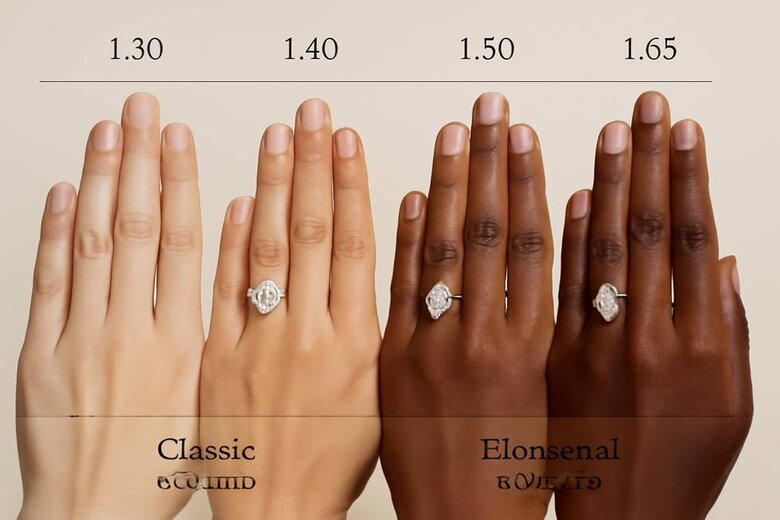
Ovals now represent the fastest-growing diamond shape, with search volume increasing 23% year-over-year. This isn't temporary trend chasing. It reflects converging forces: celebrity influence, optical advantages, and psychological appeal of maximized visual impact within budget constraints.
The historical context: Lazare Kaplan developed oval brilliants in the 1960s by applying round diamond faceting to elongated forms. For four decades, rounds dominated at 60-70% market share. Ovals remained niche at 8-12%. The inflection point arrived between 2018-2020. Instagram's visual culture amplified celebrity rings. And lab-grown availability removed the price penalty that previously made larger ovals prohibitive.
What market researchers call "aspirational mimicry" kicked in—consumers replicate visible status symbols when economic barriers fall. The Kardashian-Jenner family's collective adoption of elongated shapes accelerated this dramatically.
The technical advantages explain sustained popularity: Oval diamonds create 6-8mm more length coverage on average fingers compared to rounds of equal carat weight. A 1.5-carat oval (approximately 10.5mm × 7mm) visually matches a 1.8-carat round (approximately 8mm diameter). Yet costs 15-20% less even within lab-grown pricing. This geometric efficiency delivers finger-slimming effects that rounds cannot achieve.
Theory aside—what does this mean in practice? Parallel sides create vertical lines that optically lengthen fingers. Particularly valued by wearers with wider finger widths or shorter finger lengths.
Length-to-width ratio governs outcomes more than carat weight. Ratios between 1.35-1.45 produce "classic ovals" balancing elongation with width. Ratios 1.50-1.65 create "elongated ovals" favored for maximum drama. Consumer preference research shows most select ratios between 1.38-1.48 when viewing physical comparisons—though online searches disproportionately feature elongated terms. A disconnect between aspiration and actual preference.
The trade-off? Ovals sacrifice the perfect symmetry that makes rounds forgiving of minor cut variations. Cut quality impacts appearance dramatically. A round with "Very Good" cut grade remains beautiful. An oval with identical grade may display prominent bow-tie effects or uneven brilliance. This sensitivity creates market segmentation—budget ovals frequently show visible compromises, while quality-focused suppliers apply stricter optical standards.
"While ovals are celebrated for their aesthetic and cost-effective advantages, its crucial to focus on the hidden ratio—the depth-to-width ratio. This ratio plays a significant role in the light performance of the diamond, often overlooked but pivotal for maximizing the stone’s brilliance and fire. An optimal depth-to-width ratio ensures the diamond reflects light efficiently, enhancing its sparkle and minimizing any unfavorable shadows or dark spots. Evaluating this ratio provides a discerning buyer with the assurance of a diamond’s quality beyond its surface measurements."
Expert Insight: "The bow-tie effect in oval diamonds isn't a defect—it's physics. Light reflection across elongated pavilions naturally creates shadow patterns. Premium cutting minimizes this to a subtle hourglass rather than dark band. When evaluating ovals, view stones under multiple lighting conditions: natural daylight, LED, and incandescent. A well-cut oval shows minimal bow-tie across all three. If the shadow dominates in any lighting, that's a cut quality issue." — Sarah Chen, IGI Master Gemologist, 18 years certification experience
The bottom line? Lab-grown pricing makes 2-3 carat ovals accessible at $3,000-6,000 instead of $25,000-50,000 for natural equivalents. This size range maximizes the shape's visual drama. Rounds retain significance for traditionalists. But ovals now define modern romance for couples seeking contemporary elegance that photographs dramatically.
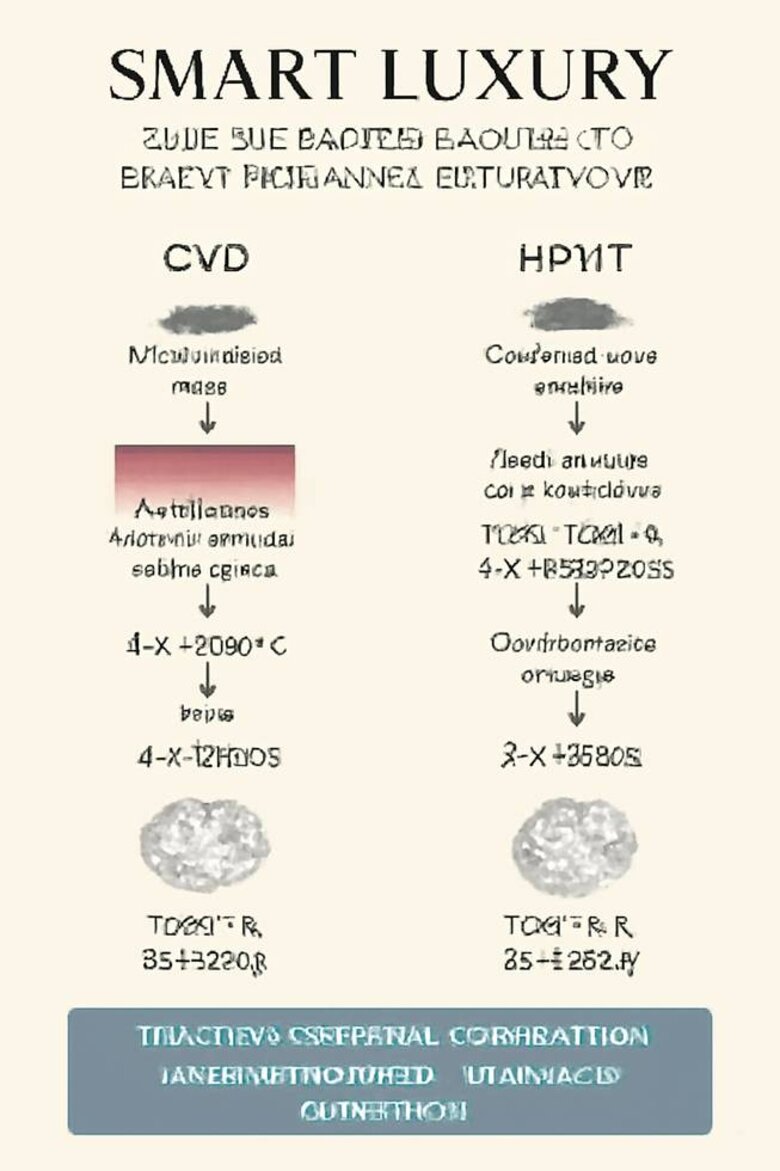
Smart Luxury: How Lab-Grown Ovals Deliver Bigger Brilliance, Better Value
Lab-grown ovals deliver 60-80% cost savings versus mined equivalents of identical grades. But value extends beyond price reduction. It's strategic advantage.
The upgrade equation: A $5,000 budget purchases a 0.8-carat natural oval with VS2 clarity and H color. Or a 2.0-carat lab-grown oval with VVS1 clarity and E color. The difference between respectable and unforgettable. Between a ring that's noticed and one that commands attention across rooms.
Infographic Elements:
- Left Column - CVD Process: Diamond seed plate → Hydrogen-rich plasma chamber → 800-1000°C temperature → Carbon atoms deposit layer-by-layer → 4-6 week growth cycle → Result: Type IIa diamonds (purest form)
- Right Column - HPHT Process: Carbon source (graphite) → Cubic press chamber → 1300-1600°C + 5-6 gigapascals pressure → Mimics 150km depth conditions → 2-4 week crystallization → Result: Type Ib/IIa diamonds
- Bottom Comparison Bar: Both produce identical chemical composition (C), same refractive index (2.417), same hardness (10 Mohs), same dispersion (0.044)
Why do lab-grown and natural diamonds perform identically? Crystalline structure. Both consist of carbon atoms in cubic crystal lattice. Same refractive index. Same dispersion. Same hardness. CVD growth replicates geological conditions by depositing carbon atoms layer-by-layer onto diamond seed plates in hydrogen-rich plasma chambers at 800-1000°C. HPHT technology subjects carbon to 1300-1600°C and 5-6 gigapascals pressure—identical conditions 150 kilometers below Earth's surface.
The six-week laboratory timeline versus billions of years represents the sole fundamental difference. Making "real versus fake" framing scientifically inaccurate.
Here's the practical side: "Natural" commands premium pricing due to scarcity economics, not performance advantages. Diamonds are industrially useful because of properties, not origin. Certification (IGI, GIA, GCAL) confirms grades are identical whether grown in lab or mined from earth.
Let's look at real numbers. Traditional jewelry industry guidance recommended two months' salary for engagement rings—a De Beers marketing construct from the 1930s. Lab-grown economics render this obsolete. Median U.S. household income of $75,000 suggests $12,500 under old formulas. But $12,500 in lab-grown purchasing power delivers 3.5-4.5 carat ovals with premium grades (D-E color, VVS1-VS1 clarity). Equivalent natural diamonds? $80,000-100,000.
| Your Budget | Natural Diamond Specifications | Natural Diamond Total Cost | Lab-Grown Diamond Specifications | Lab-Grown Diamond Total Cost | Your Upgrade Advantage |
|---|---|---|---|---|---|
| $3,000 | 0.50ct OvalSI1 ClarityI-J ColorGood Cut | $2,950 | 1.50ct OvalVVS2 ClarityE-F ColorExcellent Cut | $2,925 | 3× larger carat weight2 clarity grades higher3-4 color grades higherSuperior cut quality |
| $5,000 | 0.80ct OvalVS2 ClarityH ColorVery Good Cut | $4,960 | 2.00ct OvalVVS1 ClarityE ColorExcellent Cut | $4,900 | 2.5× larger carat weight2 clarity grades higher3 color grades higherPremium cut grade |
| $8,000 | 1.00ct OvalVS1 ClarityG ColorVery Good Cut | $7,950 | 2.80ct OvalVVS1 ClarityD-E ColorExcellent Cut | $7,900 | 2.8× larger carat weight1 clarity grade higher2-3 color grades higherMuseum-quality specifications |
| $12,000 | 1.30ct OvalVS1 ClarityF-G ColorVery Good Cut | $11,900 | 4.00ct OvalVVS1 ClarityD ColorExcellent Cut | $11,850 | 3× larger carat weightMaintains/improves clarityHighest color grade (D)Statement-level presence |
| $20,000 | 2.00ct OvalVS2 ClarityG ColorVery Good Cut | $19,800 | 6.50ct OvalVVS1 ClarityD ColorExcellent Cut | $19,750 | 3.25× larger carat weight2 clarity grades higher2 color grades higherRed-carpet worthy size |
| $30,000 | 2.50ct OvalVS1 ClarityF ColorVery Good Cut | $29,750 | 9.00ct OvalVVS1 ClarityD ColorExcellent Cut | $29,700 | 3.6× larger carat weightMaintains top clarityHighest color gradeHeirloom-caliber diamond |
| $50,000 | 3.20ct OvalVS1-VS2 ClarityF-G ColorVery Good Cut | $49,600 | 14.00ct OvalVVS1 ClarityD ColorExcellent Cut | $49,500 | 4.4× larger carat weightPremium clarity gradeColorless perfectionInvestment-grade specs |
| Your Budget | Natural Diamond | Lab-Grown Diamond | Quality Upgrade |
|---|---|---|---|
| $3,000 | 0.5ct, SI1, I-J color | 1.5ct, VVS2, E-F color | 3× size, 2 clarity grades, 3 color grades |
| $5,000 | 0.8ct, VS2, H color | 2.0ct, VVS1, E color | 2.5× size, 2 clarity grades, 3 color grades |
| $8,000 | 1.0ct, VS1, G color | 2.8ct, VVS1, D-E color | 2.8× size, 1 clarity grade, 2-3 color grades |
| $12,000 | 1.3ct, VS1, F-G color | 4.0ct, VVS1-VS1, D color | 3× size, maintains/improves all grades |
| $20,000 | 2.0ct, VS2, G color | 6.5ct, VVS1, D color | 3.25× size, 2 clarity grades, 2 color grades |
The resale reality: Natural diamonds retain 25-35% of retail pricing in secondary markets. Lab-grown currently command 10-15%. Both represent losses. Diamonds function poorly as investments regardless of origin. They're purchases for emotional value, not financial speculation.
What does this translate to for your purchase? More diamond. Better grades. Within your budget. Without compromise on beauty or durability. The sustainable production becomes bonus—not primary selling point, but reinforcement of smart value decision.
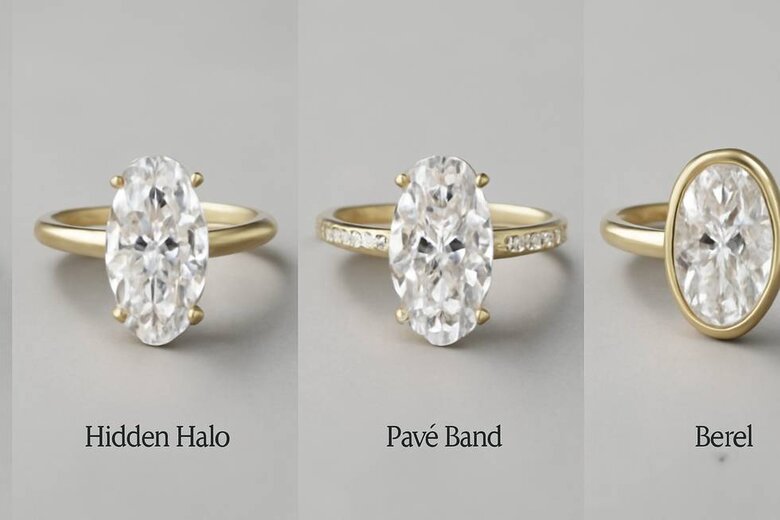
Design Your Dream: Celebrity-Inspired Settings That Make Ovals Shine
Blake Lively's yellow gold solitaire represents timeless wisdom: minimal metal, maximum light. Four or six prongs secure the oval while allowing brilliant-cut facets to perform without obstruction. This creates the "floating diamond" effect where metal recedes and stone dominates.
Rose gold complements ovals particularly effectively. The warm tone (75% gold alloyed with 25% copper for 18k rose) contrasts with diamond's cool brilliance. The elongated shape provides sufficient visual mass to prevent metal from overwhelming composition. Hailey Bieber's approach demonstrates this—her substantial oval requires minimal surrounding detail because the diamond's size creates inherent drama.
The trade-off appears in smaller stones under 1.5 carats. Solitaires may feel understated. Solution? Hidden halo settings place micro-pavé diamonds under the center stone's basket. Invisible from top view. But reflecting light upward through pavilion to amplify brightness without visible embellishment.
Pavé band settings create continuous sparkle flanking the center oval. Small diamonds (typically 0.01-0.02 carats each) set in micro-prongs along two-thirds of band circumference. This multiplies diamond surface area for perceived luxury. The trade-off? Maintenance complexity. Pavé diamonds require periodic tightening and occasional replacement in active-wear scenarios. Solitaires demand less maintenance while offering unobstructed views.
| Setting Style | Best For | Visual Impact | Maintenance Level | Setting Price Range | Lifestyle Fit | Oval Size Recommendation |
|---|---|---|---|---|---|---|
| Classic Solitaire (4 or 6-prong) | Timeless elegance seekers, minimalists, Blake Lively-inspired look | "Floating diamond" effect - minimal metal, maximum light performance | Low - Annual prong check | $800-$1,500 | Active daily wear, low-maintenance lifestyles, professionals | 1.5+ carats for sufficient presence; smaller stones may feel understated |
| Hidden Halo | Brightness boost without visible embellishment | Enhanced sparkle from below - micro-pavé reflects light upward through pavilion, invisible from top | Low-Medium - Annual inspection of hidden stones | $1,200-$2,000 | Those wanting brilliance amplification, dislikes visible halos, office environments | Under 1.5 carats - perfect solution for smaller ovals needing brightness |
| Pavé Band | Maximum sparkle, continuous diamond coverage, Hailey Bieber approach | Multiplied diamond surface area - 0.01-0.02ct stones along 2/3 band circumference | Medium - Biannual tightening, periodic stone replacement in active scenarios | $1,800-$3,000 | Office/formal wear, sparkle enthusiasts, less suited for hands-on activities | Works with all sizes; larger ovals (2+ ct) create inherent drama needing less side detail |
| Bezel or Half-Bezel | Active lifestyles, modern aesthetic, stone protection | Contemporary look with metal surrounding/partially surrounding diamond - protects vulnerable oval ends | Low - Most secure setting, minimal maintenance | $1,000-$1,800 | Athletes, hands-on professions, gardeners, gym-goers, active parents | All sizes; especially recommended for protecting smaller ovals under 1.5ct |
| Three-Stone (with trapezoid or baguette sides) | Symbolic meaning, balanced composition, finger width coverage | Side diamonds frame center oval - creates width balance for narrower hands | Medium - Multiple stones require regular checking | $2,500-$4,500 | Traditional with contemporary flair, formal occasions, sentimental wearers | 1.0-2.0ct center oval; trapezoid sides create proportional balance |
| Vintage-Inspired (milgrain, filigree details) | Intricate metalwork lovers, romantic aesthetic, collectors | Ornate detailing with milgrain edges, engraving, scrollwork - statement piece presence | Medium-High - Delicate details require careful handling and cleaning | $2,000-$4,000 | Special occasions, collectors, those prioritizing artistry over practicality | 1.0-1.5ct allows ornate setting to shine without overwhelming design |
| East-West Orientation (2025 trend) | Modern innovators, horizontal design preference, finger width coverage | Horizontal diamond positioning creates width coverage - geometric basket designs, mixed metals | Low-Medium - Depends on accompanying design elements | $1,200-$2,500 | Fashion-forward wearers, narrower hands seeking balanced proportions, experimenters | 1.40+ length-to-width ratio showcases elongation even when horizontal |
| Setting Style | Best For | Visual Impact | Maintenance | Price Range | Lifestyle Fit |
|---|---|---|---|---|---|
| Classic Solitaire | Timeless elegance, low maintenance | Clean, diamond-focused | Low - annual check | $800-1,500 | Active wear, minimalists |
| Hidden Halo | Brightness boost without visible halo | Enhanced sparkle from below | Low-medium | $1,200-2,000 | Wants brilliance, dislikes visible halos |
| Pavé Band | Maximum sparkle, luxury aesthetic | Continuous diamond line | Medium - biannual tightening | $1,800-3,000 | Office/formal wear, sparkle lovers |
| Bezel/Half-Bezel | Active lifestyles, modern look | Contemporary, protected | Low | $1,000-1,800 | Athletes, hands-on professions |
| Three-Stone | Symbolic meaning, balanced design | Side diamonds frame oval | Medium | $2,500-4,500 | Traditional with flair |
| Vintage-Inspired | Intricate details, romantic | Ornate metalwork, milgrain | Medium-high | $2,000-4,000 | Statement pieces, collectors |
Why does this matter? Lifestyle factors determine optimal setting. Active wearers benefit from bezel or half-bezel designs protecting vulnerable points at oval's ends. Those seeking maximum finger-slimming effects should select vertical orientations and minimal side metal emphasizing elongated geometry.
Modern 2025 settings increasingly feature east-west orientations (diamond positioned horizontally), geometric basket designs, and mixed-metal combinations. Innovations possible because lab-grown pricing allows experimentation without six-figure risks.
"While many focus on the aesthetic appeal of pavé settings, its crucial to understand the technical nuances that affect their longevity. Each tiny diamond in a pavé band is held by micro-prongs, which, if not engineered with precision, can lead to increased stone loss over time. At Labrilliante, we utilize advanced computational modeling to optimize the spacing and angle of these prongs, enhancing the structural integrity of the setting without compromising its visual splendor. This meticulous approach ensures a balance between beauty and durability, which is paramount in jewelry design."
Expert Insight: "Ovals have natural directional energy—vertical settings elongate fingers, horizontal creates width coverage. For hands with shorter fingers or wider widths, I always recommend 1.40+ length-to-width ratios in vertical orientation with minimal side metal. The elongation effect can add perceived half-inch to finger length. For narrower hands, horizontal orientations or three-stone designs with trapezoid sides create balanced proportions. The setting doesn't just hold the diamond—it orchestrates how your hand's geometry interacts with the stone's shape." — Michael Torres, Custom Jewelry Designer, 22 years celebrity clientele experience
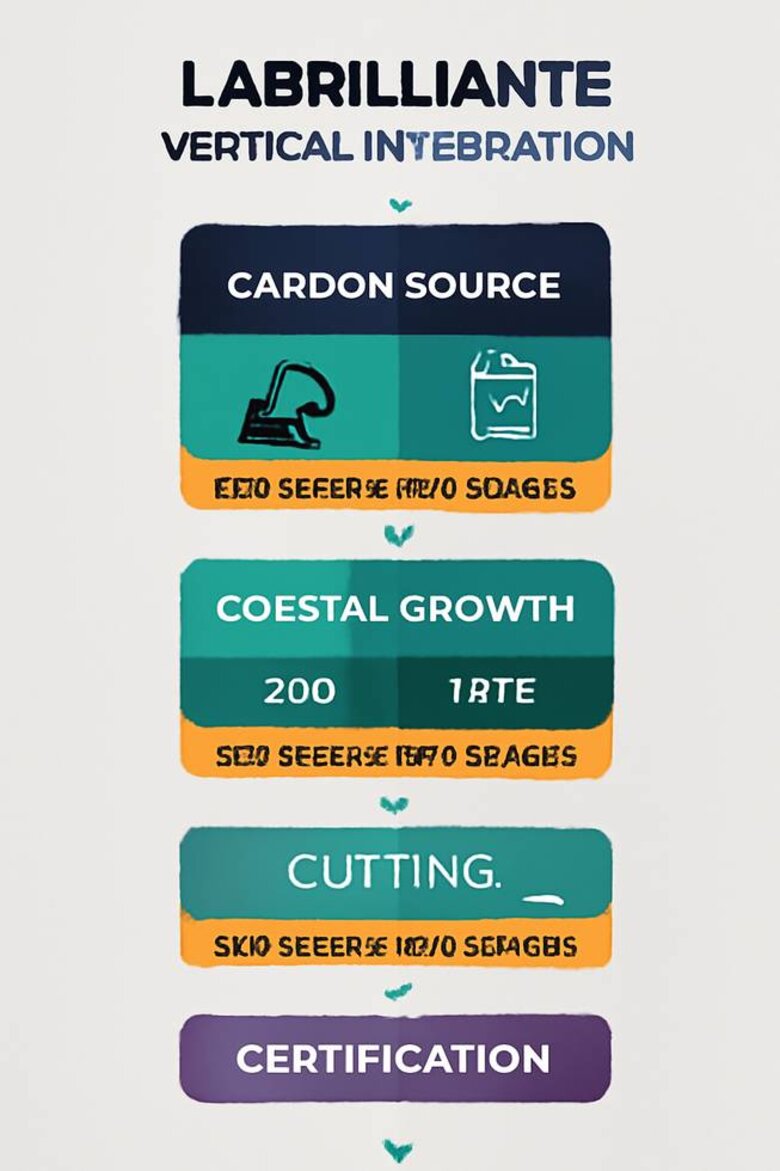
The Labrilliante Difference: Manufacturer-Direct Quality You Can Trust
Labrilliante operates as manufacturer rather than retailer, eliminating the 40-60% markup chains separating diamond laboratories from consumers. Our vertical integration encompasses CVD and HPHT production, in-house quality control, and direct partnerships with IGI, GIA, and GCAL for transparent verification.
This manufacturer-direct transparency provides full traceability from crystal growth through certification. Addressing quality uncertainty inherent in multi-vendor retail models where origin and screening standards remain opaque. Direct-from-lab pricing enables 60-80% savings versus natural diamonds while maintaining premium grades that competitive retailers cannot economically offer.
B2B clients—including national jewelry chains and independent jewelers—rely on our USA lab-grown diamonds expertise developed through 15+ years of technological refinement. The difference? Consistent quality. Verified provenance. And pricing that makes celebrity-inspired ovals accessible to everyone.
Your Celebrity-Level Ring Awaits: Start Your Lab-Grown Oval Journey Today
Oval lab-grown diamond rings deliver Blake Lively's elegance, Hailey Bieber's drama, and Kourtney Kardashian's sophistication at 60-80% savings versus natural equivalents. You've seen the numbers: a 2-carat lab-grown oval with VVS1 clarity and E color costs $1,800-2,400 instead of $12,000-16,000. That's identical chemical composition, identical brilliance, and finger-lengthening geometry that maximizes visual impact—without the financial strain of traditional diamond pricing. The 23% year-over-year search growth for oval shapes isn't hype. It's recognition that smart luxury means bigger, better diamonds within your actual budget.
Labrilliante's Manufacturer-Direct Advantage Puts Premium Ovals Within Reach
Our vertical integration eliminates the 40-60% retailer markup you'd pay elsewhere. Direct laboratory-to-customer model. IGI, GIA, and GCAL certification on every stone. Full traceability from crystal growth through your finger. The result? 2-3 carat ovals with premium grades that competitive retailers can't economically offer—delivered at prices that make celebrity-inspired rings achievable for median household incomes.
Book Your Free Consultation: Design Your Dream Oval in 15 Minutes
Ready to see what your budget actually buys in lab-grown ovals? Our diamond specialists guide you through length-to-width ratio selection, setting style matching, and grade optimization based on your lifestyle and aesthetic preferences. No pressure. No confusion. Just transparent expertise helping you create a ring that commands attention for decades. Schedule your free consultation now—or explore our certified oval collection with 360° videos and real-time pricing. Your Blake Lively moment starts today.
Frequently Asked Questions
The bow-tie effect occurs when light reflects across an oval's elongated pavilion, creating shadow patterns in the center—it's physics, not a defect. While it cannot be completely eliminated, premium cutting techniques minimize it to a subtle hourglass rather than a dark band. Always view ovals under natural daylight, LED, and incandescent lighting to assess bow-tie visibility across different conditions.
An oval provides approximately 10% more surface area than a round of equal carat weight, creating significant visual differences. For example, a 1.5-carat oval (10.5mm × 7mm) visually matches a 1.8-carat round, while a 2-carat oval appears equivalent to a 2.3-carat round. This "perceived size advantage" explains why ovals deliver more finger coverage without requiring higher carat weights.
Lab-grown diamonds currently retain 10-15% of purchase price versus 25-35% for natural stones primarily due to production scalability and declining manufacturing costs. However, both categories lose significant value after purchase—a $15,000 natural diamond resells for $3,750-5,250 (losing $9,750-11,250), while a $2,400 lab-grown equivalent resells for $240-360 (losing $2,040-2,160). The natural diamond's better percentage doesn't offset its catastrophic absolute dollar loss unless you're purchasing investment-grade stones over 5 carats.
CVD (Chemical Vapor Deposition) grows diamonds at 800-1000°C by depositing carbon atoms layer-by-layer, producing Type IIa diamonds—the purest form. HPHT (High Pressure High Temperature) uses 1300-1600°C and extreme pressure to crystallize carbon, creating Type Ib/IIa diamonds. Both methods produce stones with identical chemical composition (crystalline carbon), same refractive index (2.417), same hardness (10 Mohs), and indistinguishable appearance—the growth method doesn't affect visual beauty or durability.
Ratios between 1.35-1.45 create "classic ovals" that balance elongation with width, which most consumers prefer when viewing physical comparisons. Ratios between 1.50-1.65 produce "elongated ovals" with maximum finger-slimming drama. For hands with shorter fingers or wider widths, choose ratios of 1.40+ in vertical orientation; for narrower hands, consider horizontal orientations or lower ratios around 1.35-1.40 for balanced proportions.
Ovals are far more sensitive to cut quality than rounds because their elongated shape makes symmetry variations more visible. A round with "Very Good" cut grade remains beautiful, but an oval with identical grading may show prominent bow-tie effects or uneven brilliance. Always request videos or in-person viewing under multiple lighting conditions, and prioritize ovals with minimal bow-tie visibility and consistent sparkle across the entire stone rather than relying solely on cut grade designations.
Bezel or half-bezel settings provide optimal protection for active wearers by encircling the diamond's edges with metal, particularly safeguarding the vulnerable pointed ends of ovals. These contemporary designs secure the stone while maintaining low profiles that resist snagging. If you prefer prong settings, choose six-prong configurations over four-prong, as they distribute pressure more evenly and reduce risk of the elongated stone twisting or loosening with daily wear.
Focus on optimizing carat weight and color/clarity grades rather than brand premiums, since lab-grown pricing allows significant upgrades within fixed budgets. A $5,000 budget that would buy a 0.8-carat natural oval with VS2 clarity and H color can purchase a 2.0-carat lab-grown oval with VVS1 clarity and E color—delivering 2.5× the size plus superior grades. Choose manufacturer-direct sources to eliminate 40-60% retailer markups, and prioritize IGI, GIA, or GCAL certification for quality verification.


